For people in England, it is a proud badge to be a northerner. However, in a fierce debate over the north-south divide, no one can really agree on where the north is! The likes of Manchester and Liverpool are easily in the north, but when it comes to Birmingham, who knows?
Northern England has some of the most beautiful landscapes in the United Kingdom. There are the waters and meres of the Lake District, the rugged coastline of Northumberland, and the charm of the Yorkshire Dales. In this post, we’ll take a look at some of the most beautiful and fascinating castles in North England. Which one will you decide to visit first?
Disclaimer: This post contains affiliate links. This means that should you click on certain links and then subsequently purchase a product, I will receive a small commission.

How to Get Around Northern England The best way to visit the castles in Northern England is by car, which gives you the most freedom to travel around. I recommend booking a car through Discover Cars. They offer the best price, you can compare all rental car agencies’ prices, and you can cancel or modify your booking for free. Click here for more information, availability and the latest prices. Alternatively, you can take the Northern Railway to visit the castles. Click here for more information on train tickets.
16 Castles to Visit in Northern England
1. Beeston castle
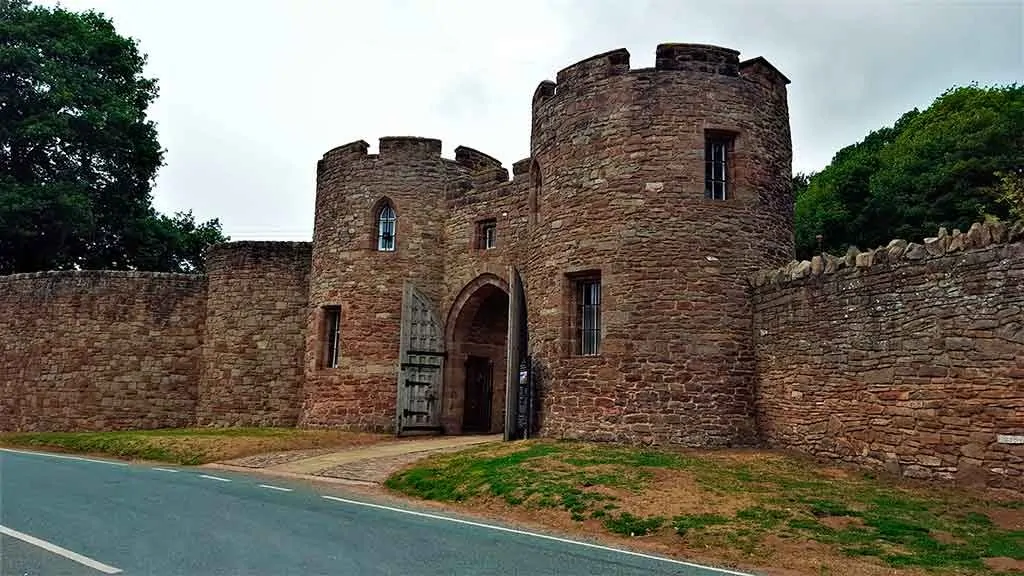
When the 6th Earl of Chester, Ranulf de Blondeville, decided to build a castle on his return from the crusades, he chose his location well. The crag on which Beeston Castle stands has been occupied since the Neolithic age, and the foundations of an Iron Age Hill Fort lie here.
Although the castle was initially used as a fortification to both defend and attack, its purpose changed somewhat, and it became a royal castle. There is even said to be a treasure in the castle grounds, squirreled away by Richard III.
From the castle, you can see across the Welsh mountains on a clear day. It’s surrounded by woodland, which makes for a lovely walk too!
Where: Beeston, Tarporley
Style: Medieval
Open for visit: Yes. Check here for more information.
2. Skipton castle

Built in 1090, Skipton Castle was established not long after the ‘Harrying of the North’. This was a campaign by William the Conqueror to suppress opposition to Northern England coming under Norman control. Its location meant it was also dragged into the Anglo-Scottish Wars a couple of centuries later.
Despite seeing numerous battles and sieges (one of which lasted three years in the English Civil War), Skipton boasts one of the best-preserved medieval castles in North England today. Once you’ve enjoyed the views from the watchtower and felt the chill of the dungeons, there’s a tearoom and a picnic area where visitors can relax.
Where: Skipton
When: 11th century
Open for visit: Yes, check here for more information.
3. Lancaster Castle
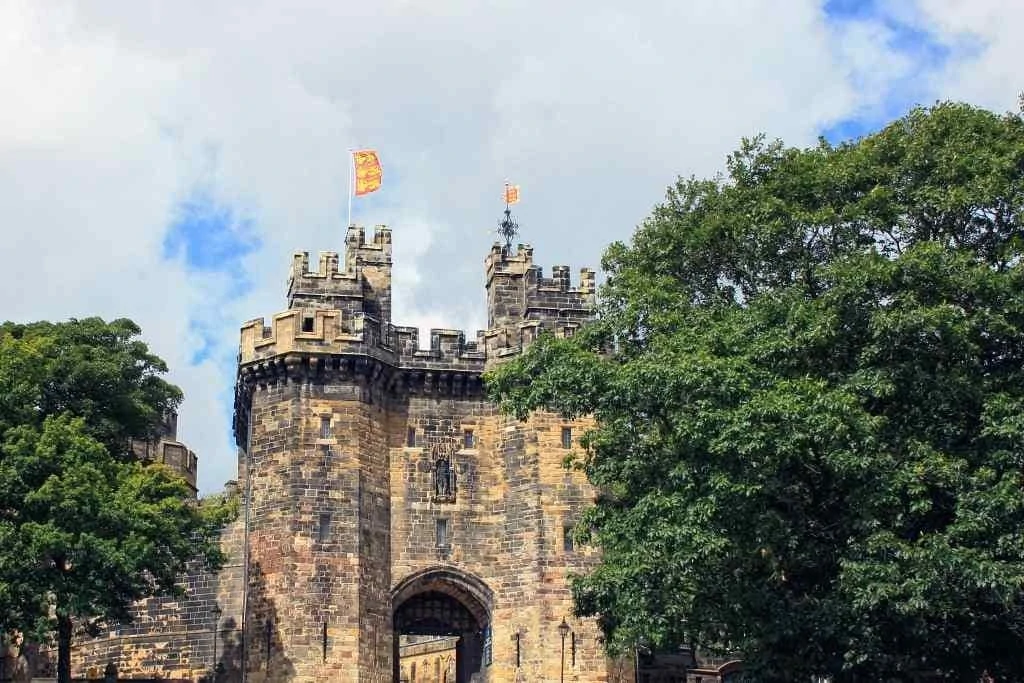
Looking across the River Lune, Lancaster Castle guarded the Picts and Scots against crossing that line in Roman Times. Also known as John O’Gaunt’s Castle, what you can see now doesn’t date quite that far back. However, along with Skipton, it is one of the best-preserved medieval castles in the country.
It has a long relationship with law and justice (or lack of it in some cases) as it was where many were condemned in the Lancashire witch trials of the 17th century, and it was an HM Prison until 2011. Now, it is a tourist attraction that you can explore on a guided tour.
Where: Lancaster
When: 11th century
Open for Visit: Yes. Check here for more information.
4. Middleham Castle

The childhood home of Richard III, the last king of the House of York, Middleham Castle sits looking out over the beautiful Yorkshire Dales from the cozy market town of the same name. Although the castle is missing its roof, it is remarkably well-preserved.
Guests can see remains of a horse mill and oven on the castle grounds as well as a 15th-century replica of the Middleham Jewel. The original is on display in the Yorkshire Museum. Middleham Castle is one of the most popular tourist attractions in the region.
Where: Middleham
When: 12th century
Open for visit: Yes. Check here for more information.
5. Raby Castle

Raby Castle is not only worth a visit for the castle itself but the surrounding woodland and deer park. The fortress was built by the powerful Nevill family in the 14th century and has nine towers. Since the 17th century, it has been the home of Lord and Lady Barnard.
The castle also boasts a coach house that holds a collection of several coaches and carriages from the 18th and 19th centuries. The 200-acre parkland in which the castle is located has traditional walled gardens, and herds of red and fallow deer, and you can even rent a bike to discover the woodland trails.
Where: Staindrop, Darlington
When: 14th century
Open for visit: Yes. Check here for more information.
6. Durham Castle
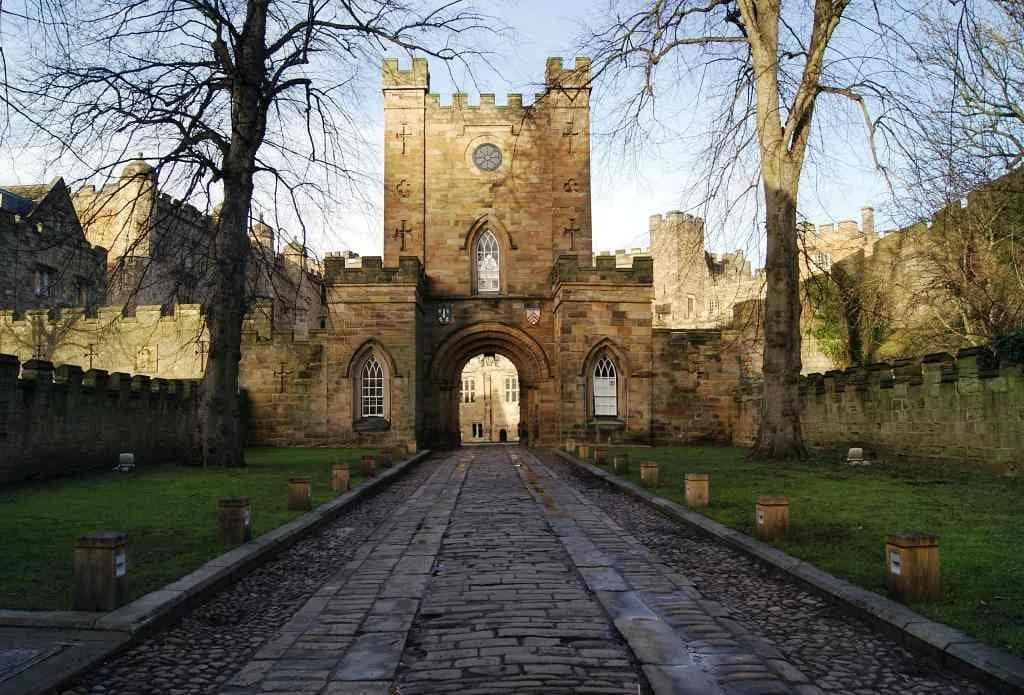
Now part of Durham’s university college, this UNESCO World Heritage has been continuously occupied since its construction just six years after William the Conqueror arrived in England. It was constructed under his orders using stone from the cliff below.
The castle has been damaged a number of times over the years but has always been rebuilt and restored. Evidence shows that Durham Castle was built on the site of an Anglo-Saxon defensive structure, much like other castles built during the Norman Conquest.
Where: Durham
When: 11th century
Open for visit: Yes, guided tours usually take place 3-4 times daily. Check here for more information.
7. Carlisle Castle

This medieval fortress has watched over Carlisle for more than 900 years. Due to the city’s location near the Scottish border near the ruin of Hadrian’s Wall, it has seen many historic battles.
Mary Queen of Scots was one of many that were held prisoner in the tower here. One of the most unusual things to see in the castle is the stone carvings in the keep.
They are thought to be the work of either prisoners or guards – either way, they are intricate and intriguing. Carlisle Castle is also home to Cumbria’s Museum of Military Life.
Where: Carlisle
When: 11th century
Open for visit: Yes. Check here for more information.
8. Prudhoe Castle
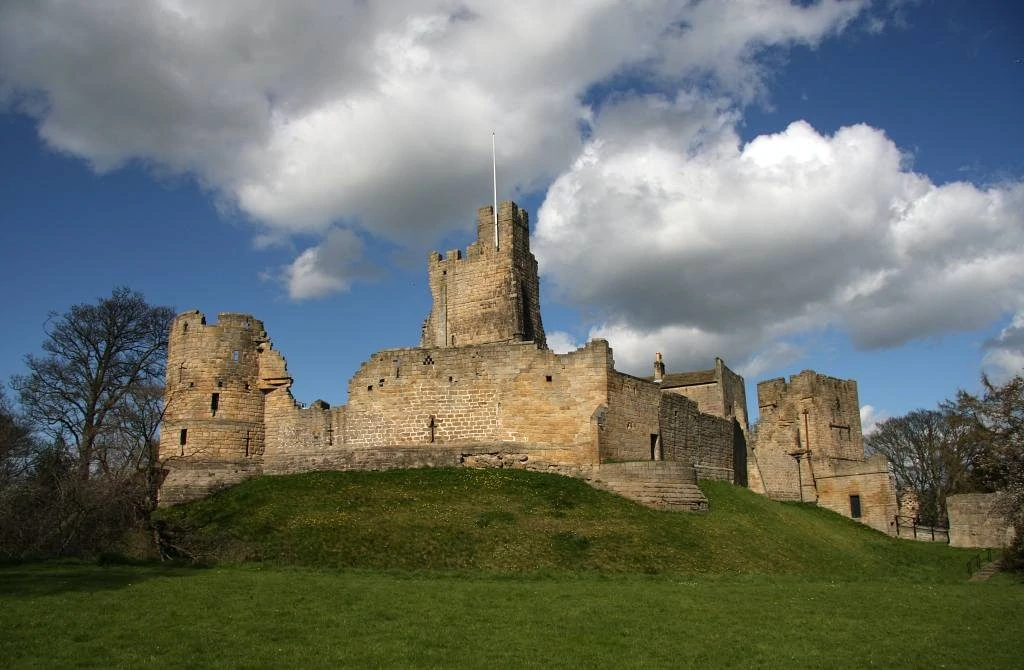
The only Northumberland castle never to be taken by force by a Scottish Army, Prudhoe Castle stands overlooking the River Tyne. It was built at the behest of William the Conqueror as one of a series of castles to protect against invading and marauding Scots.
Until recently, it was one of the longest continuously occupied castles in the UK and was owned by the Percy family (who still live in Alnwick Castle in Northumberland). There is a fine Georgian mansion within the walls and several walks along the River Tyne nearby.
Where: Prudhoe
When: 11th century
Open for Visit: Yes. Check here for more information.
9. Aydon Castle
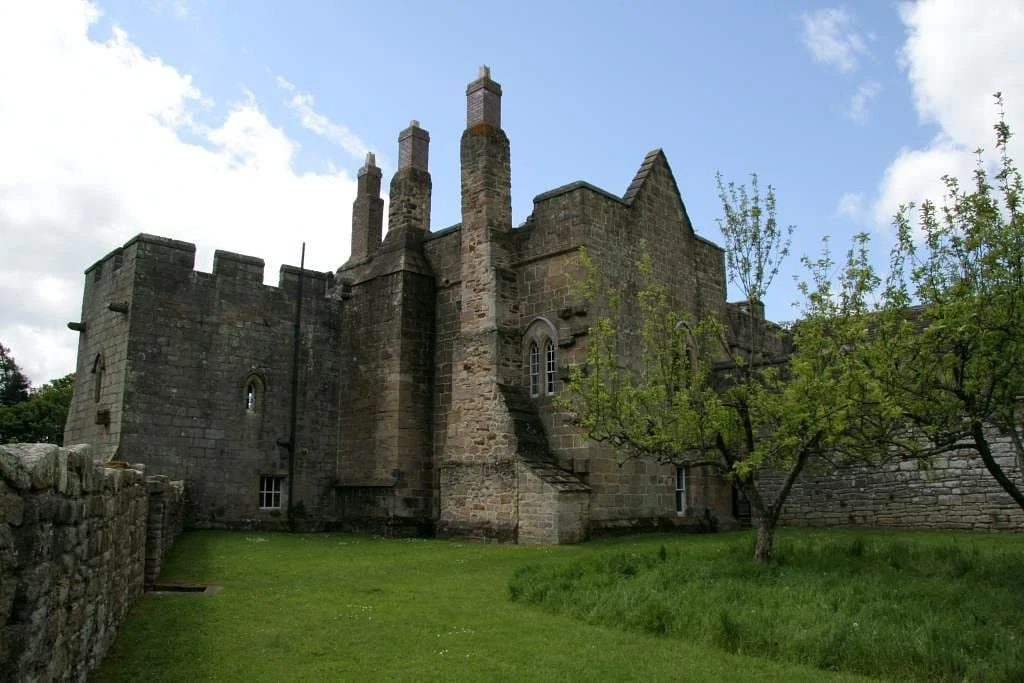
Hidden away outside the charming village of Corbridge in Northumberland, you’ll find Aydon Castle. It’s a beautiful example of a manor house that has been almost untouched since the 13th century…
Well, it was fortified during the Anglo-Scottish wars a century later, then pillaged and burned. Happily, it was restored! Since then, it has had a more peaceful life, being an occupied farmhouse from the 17th century until 1966. The castle is surrounded by woodland, perfect for walks and picnics.
Where: Near Corbridge
When: 13th century
Open for Visit: Yes. Check here for more information.
10. Tynemouth Priory and Castle
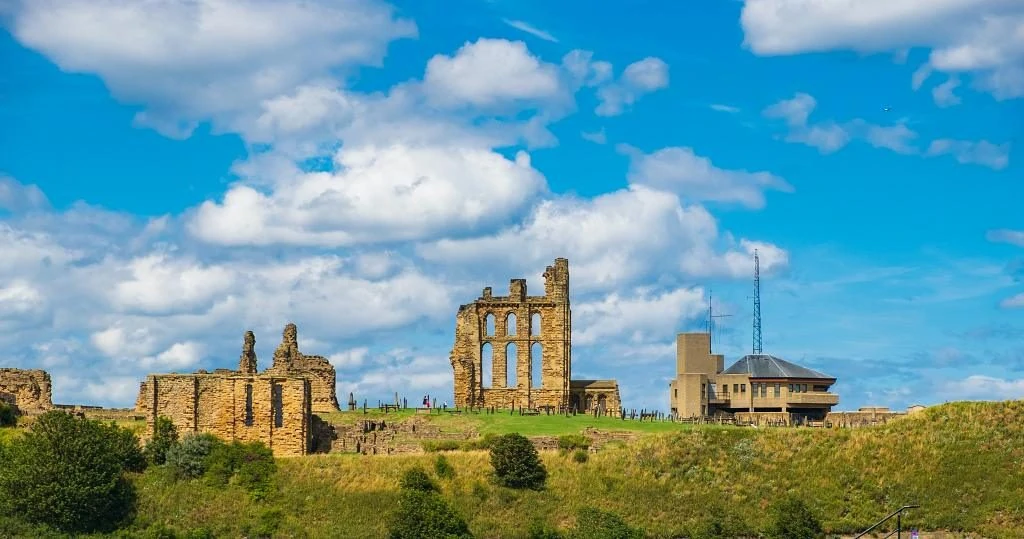
Once one of the largest fortified areas in England, Tynemouth Priory overlooks both the North Sea and River Tyne. The ruins you can now see date back to the 13th and 14th centuries, but this place has more than 2,000 years of history.
It has been constantly repurposed since its beginnings as an Anglo-Saxon settlement, later becoming an Anglican monastery, royal castle, and artillery fort.
You can still see the refurbished battery gun that defended the Tyne in both world wars of the 20th century. After visiting the priory, the charming village of Tynemouth has lots of independent cafes and shops, as well as two excellent beaches.
Where: Tynemouth
When: 13th century
Open for Visit: Yes. Check here for more information.
11. Elsdon Tower
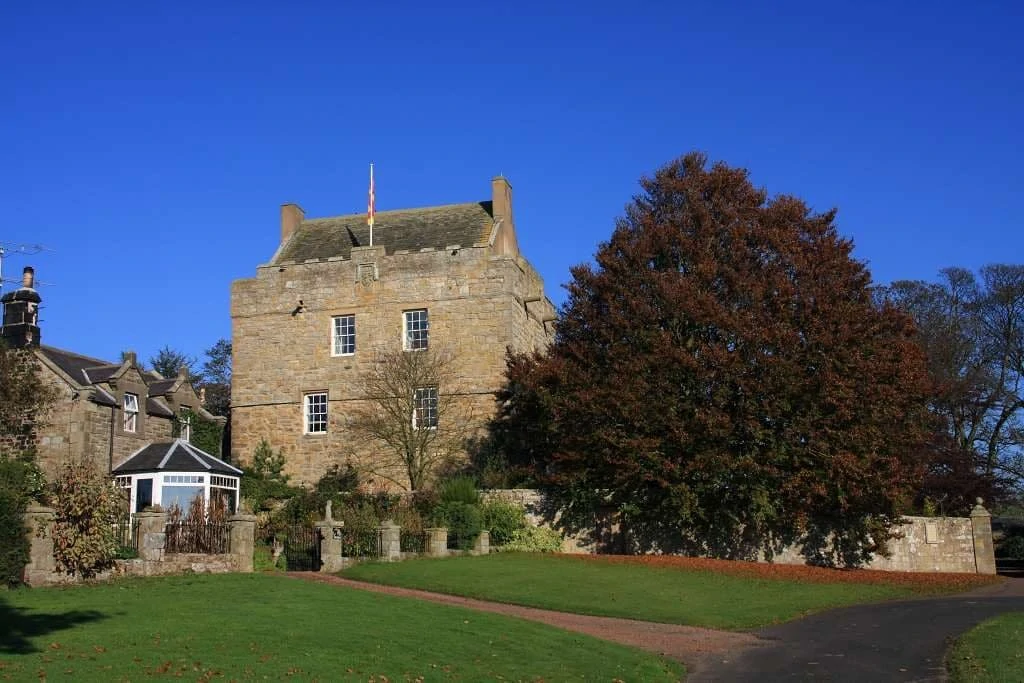
Elsdon Tower was first constructed in 1415 near the village of Otterburn, close to Kielder Forest Park. It has thick walls and protects those inside against the border reivers (raiders) that terrorized the county in the 16th century.
The defensive tower was converted into a rectory and has been named as the best-preserved historic building in Northumberland National Park. You can only view it from afar as it’s not open to the general public.
Where: Elsdon
When: 15th century
Open for Visit: No. The tower is a private residence but can be viewed from afar.
12. Warkworth Castle

The Northumberland Coastal Route is an excellent road trip if you want to enjoy two of the things Northumberland is known for – its jaw-droppingly beautiful coastline and its historic castles. Warkworth is one of the first you’ll come to, and it’s unmissable.
It dominates the village of the same name, with most of the exterior walls still intact. Warkworth Castle was the seat of the Dukes of Northumberland, and it has an unusual cross-shaped keep. There’s also a hermitage that you can access from the castle, but that’ll take a small boat ride upstream.
Where: Warkworth
When: 12th century
Open for Visit: Yes. Check here for more information.
13. Dunstanburgh Castle
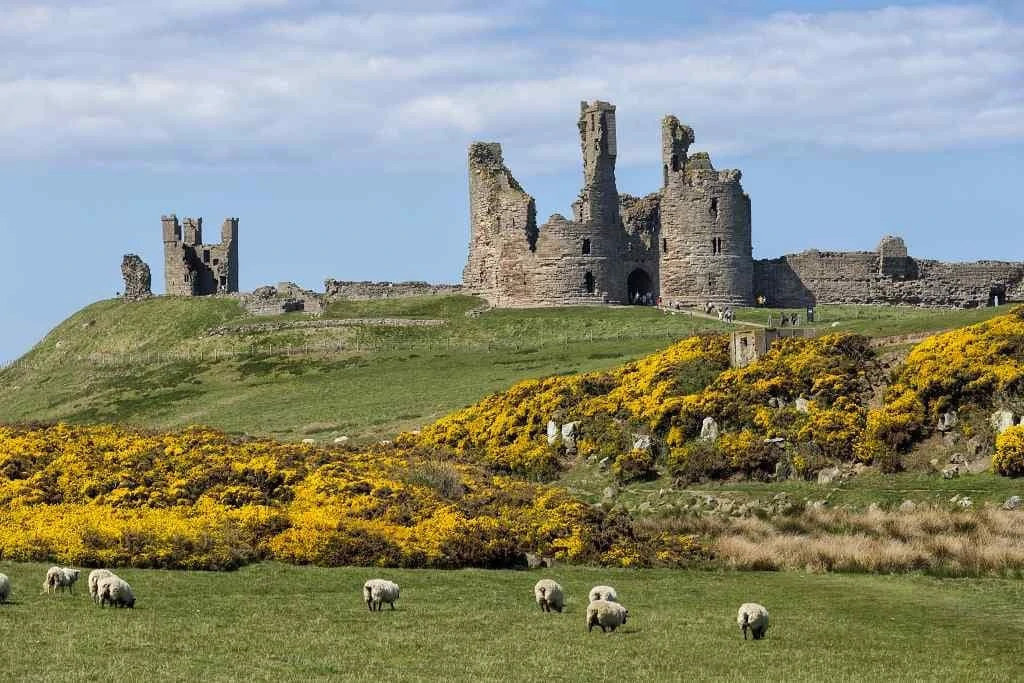
Located along one of the most popular coastal walks in Northumberland, Dunstanburgh Castle stands on a remote headland between Craster and Embleton. Like Tynemouth Priory, it was once one of the largest fortifications in England.
Still standing are the Lilburn Tower and the great gatehouse. Walking to Dunstanburgh is the perfect blend of history and nature. Visitors should reward themselves with some smoked kippers at Craster after a bracing walk by the North Sea.
Where: Near Craster and Embleton
When: 14th century
Open for Visit: Yes. Check here for more information.
14. Bamburgh Castle
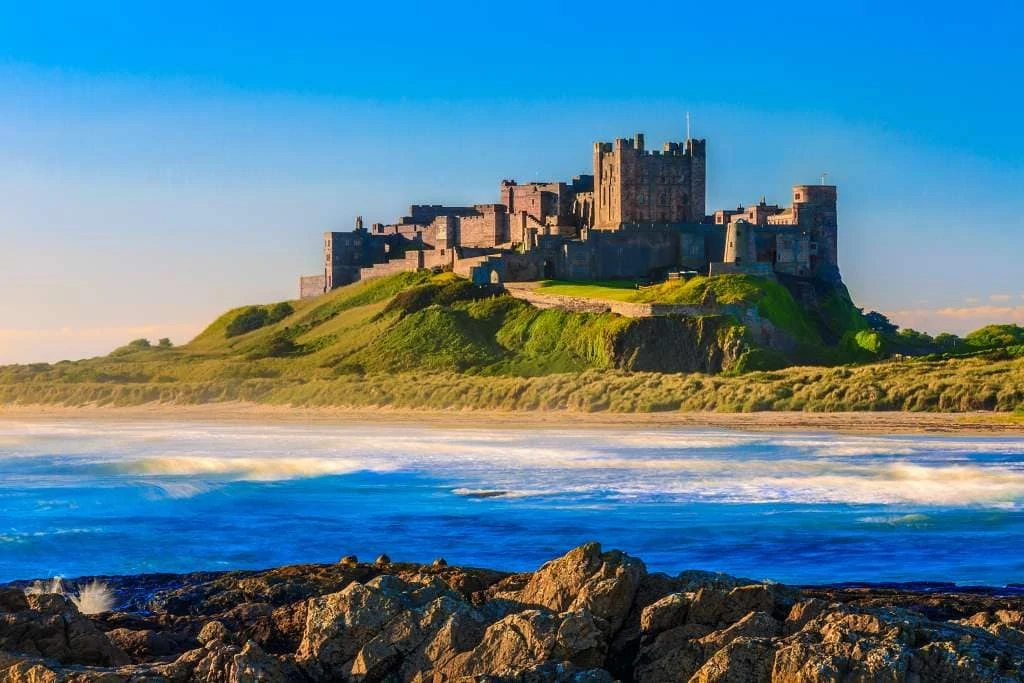
Just a few miles up the coast from Dunstanburgh Castle, you’ll find Bamburgh Castle. Standing on an outcrop above the village of the same name, it is one of the most majestic and impressive castles in North England.
Archaeologists often dig here in the summer as there is evidence of settlements on the site from long before the current castle was built. Bamburgh Castle is the ancient home of the Kings of Northumbria, who you can learn more about at the exhibitions in the castle.
After visiting, be sure to take a walk on the beach behind the castle or head to the nearby town of Seahouses for fish and chips.
Where: Bamburgh
When: 11th century
Open for visit: Yes. Check here for more information.
15. Lindisfarne Castle

Lindisfarne is also known as Holy Island; it’s where the Lindisfarne gospels were written. There was a monastery on the island long before the castle, which was built in the 16th century.
The castle fell into ruin but was restored in the 20th century to be a private holiday home. Now, the castle is open to the public and showcases the history of the island.
Make sure to check the tide times before committing to visiting this castle. Cars get stuck on the causeway throughout the year, and it’s not a pleasant situation to be in!
Where: Holy Island
When: 16th century
Open for Visit: Yes, check here for more information.
16. Norham Castle
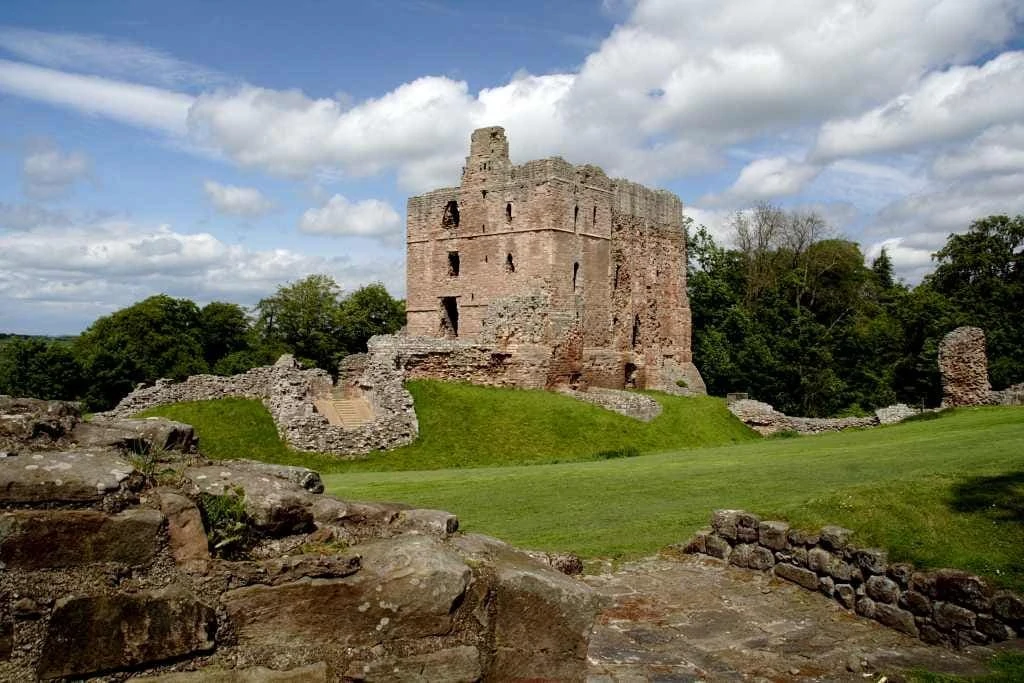
Standing just minutes from the English-Scottish border, Norham Castle commands a ford over the River Tweed. It was one of the strongest fortresses in North England, but frequent attacks from the Scots and James IV’s heavy cannon extensively damaged the castle.
Although it was rebuilt in the 16th century and adapted for artillery, Norham Castle subsequently fell into ruin. If you want to learn more about the castle, you can also visit the nearby St. Cuthbert’s 12th-century Norman Church.
Where: Berwick-upon-Tweed
When: 12th century
Open for Visit: Yes, check here for more information.
FAQs about The Best Castles in Northern England
Among the best castles in Northern England are Beeston Castle in Beeston, Skipton Castle in Skipton, Lancaster Castle in Lancaster, Middleham Castle in Middleham, Raby Castle in Staindrop, Durham Castle in Durham, Dunstanburgh Castle near Craster, and Bamburg Castle in Bamburg.
There are thousands of castles spread around England. In the North of England alone, there are over 100 castles, including castles such as Lancaster Castle, Middleham Castle, Durham Castle, and Warkworth Castle.
Durham Castle, Tynemouth Priory & Castle, Warkworth Castle, Dunstanburgh Castle, and Bamburg Castle are the best castles in North East England.
The best castles in North West England to visit are Dunstanburgh Castle, Lancaster Castle, and Carlile Castle.
